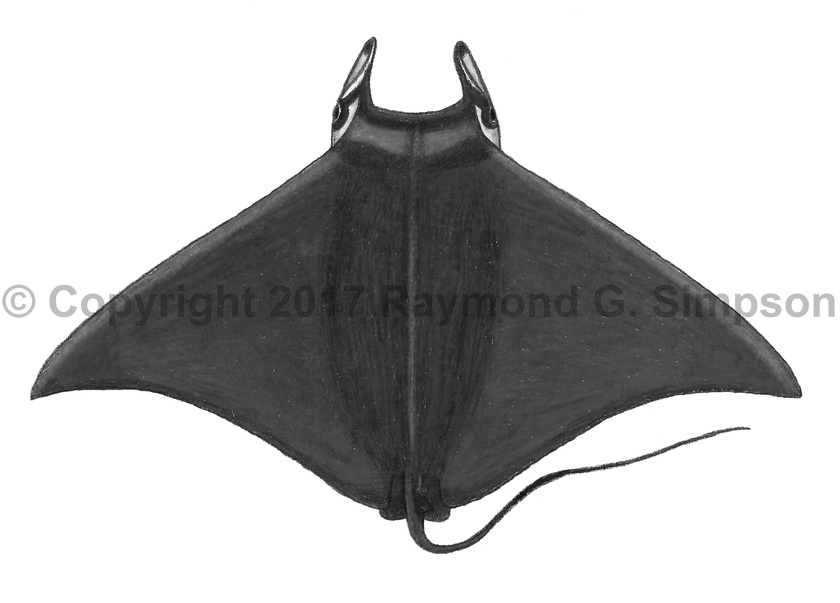
Common Name
Atlantic Devil Ray
Year Described
Bancroft, 1831
Identification
Disk small (for genus) and broad (wider than long). Head relatively small and protruding. Mouth wide and subterminal. Teeth present on both jaws. Tooth bands <55% of mouth width. Cephalic lobes prominent. Trunk thick with well developed ventral gill slits. Eyes on side of head. Spiracles below pectoral fin origin. Pectoral fins angular with pointed tips. Anterior disk margin straight or slightly convex. Posterior disk margin strongly concave. Tail long. Tail spine absent. Dorsal fin single and triangular on base of tail. Pelvic fins small. Skin with well spaced denticles in adults but naked as juveniles.
Color
Dorsum blackish or brown to blue-gray, sometimes slightly darker on the anterior disk margin. Usually unmarked. Side of head with a black "mask" over eye and curving around pectoral origin. Mostly white behind eye and on side of cephalic lobes. Ventrum almost completely white to pale gray.
Size
Maximum size to over 1.3m wide. Adults mature at about 1m. Juveniles born at around 55cm.
Habitat
Pelagic in both offshore and inshore waters.
Range
North Carolina to Argentina, including the Cariibean Sea and most of the Gulf of Mexico.
References
Last, P.R., White, W.T., Carvalho, M.R. de, Séret, B., Stehmann, M.F.W & Naylor, G.J.P (Eds.). 2016. Rays of the World. CSIRO Publishing, Melbourne. 790p.
Other Notes
Mobula rochebrunei was described for the eastern Atlantic population of “small” devil rays but is now considered synonymous with the western Atlantic M. hypostoma. These populations are most related to the eastern Pacific M. munkiana and more work needs to be done to determine if M. rochebrunei is a separate species.